A total of 200 clusters were sanctioned under the PKVY Scheme during 2017-18 to 2019-20 and 100 clusters during 2018-19 to 2020-21. The Punjab State PKVY enabled 6000 farmers to adopt organic farming during this period. Additionally, the government is implementing Parampragat Krishi Vikas Yojana and MOVCDNER (Mission Organic Value Chain Development for North Eastern Region) schemes to promote organic farming.
There is a provision for farmer training and capacity building under these schemes. For capacity building, PKVY provides financial assistance of Rs 7500 per farmer for three years. MOVCDNER provides financial assistance to farmers for training, handholding, and certification of Rs 10,000 for three years.
In addition to spreading awareness on organic and natural farming through the organization of Javik Kheti Samelan, field demonstrations, farmers training, and print and electronic media, the National Centre for Organic and Natural Farming (NCONF), Ghaziabad, is a subordinate office of the DAFW (Department of Agriculture and Farmers Welfare). NCONF has conducted the following training and demonstrations on organic and natural farming for the State of Punjab over the last three years:
- Three “Two days training of field functionaries /Extension Officers” for 61 farmers,
- Three “One-day training field cum field demonstration” for 153 farmers
- Two online “Seven days training programs” for different states benefitted 93 persons.
- 41 days “Online Outreach program” for different States, benefiting 527 farmers, including farmers of Punjab.
Punjab organic farming
The area under organic farming in Punjab
| Districts | Area in hectares |
| Ferozepur, Mukatsar, Bathinda, Faridkot, Sangrur,Mansa | 1214.5 |
| Ropar Nawanshehar, Mohali | 283.4 |
| Ludhiana, Moga, Patiala | 485.8 |
| Amritsar, Tarn Taran, Hoshiarpur, Jalandhar, Kapurthala | 404.8 |
| Fatehgarh Sahib | 101.2 |
| Birla Farm, Ropar | 141.7 |
| Total Area | 2631.5 |
Major crops in Punjab
Punjab (land of the five rivers) is one of the most fertile regions on earth. Punjab State, which has earned the name “Food Basket of the Country” & “Granary of India,” has contributed 40 percent of rice and 50-70 percent of wheat for the last two decades. Punjab is self-sufficient in producing food grains and contributes around 60% of food grains to the central pool. Agriculture in Punjab state is highly intensive in terms of land, capital, energy, nutrients, agriculture inputs, water, etc.
In case you missed it: How to Get Rid of Fruit Fly in Cucurbits: Symptoms, Treatment, Chemical, and Organic Control

With only 1.5% of the country’s geographical area, Punjab has produced about 22% of wheat, 10% of rice, and 13% of cotton of the total production of these crops in the country during 2020-21. The Firozepur District is the largest producer of wheat and rice in the state. The largest area is under the wheat crop. Other important crops of the state are rice, cotton, sugarcane, pearl millet, maize, barley, and fruit.
| Crop | Areas growing in Punjab |
| Wheat | Bathinda, Faridkot, Shri muktsar sahib, mansa and Ferozepur |
| Rice | Barnala, Malerkotla, Sangrur, Fatehgarh, Ludhiana, and Patiala |
| Cotton | Bathinda, Mansa, Fazilka, Muktsar, Barnala, Faridkot, Moga and Sangrur |
| Sugarcane | Gurdaspur, Hoshiarpur, Amritsar, Jalandhar, Pathankot, and some parts of Ludhiana |
| Maize | Hoshiarpur, Roopnagar, Shaheed Bhagat Singh Nagar, Amritsar, Gurdaspur, Jalandhar, Kapurthala, Patiala, Ludhiana, SAS Nagar, and Fatehgarh Sahib |
Organic vegetable farming in Punjab
Vegetable Farming is the practice of growing vegetables for human consumption. Originally, people grew vegetables for their consumption or to trade locally. But as time passed, vegetable farming reached global levels, covering 1.1% of the world’s total agricultural area. Vegetable crops have established their credibility through increased productivity, generating employment, and enhancing exports.
Over the years, this has become a remunerative profession that has not only improved the socio-economic status of the people of Punjab but also solved employment problems to a great extent. As a result, this vegetable farming has grown tremendously popular in Punjab, the area of land cultivated, major crops are grown in the state, the factors influencing farming, and more. Statistically, 63-64% of Punjab’s total area under cultivation is used for vegetable farming.
In case you missed it: White Onion Farming in India: Grow Onions Bigger, Faster and Onion Growing Duration
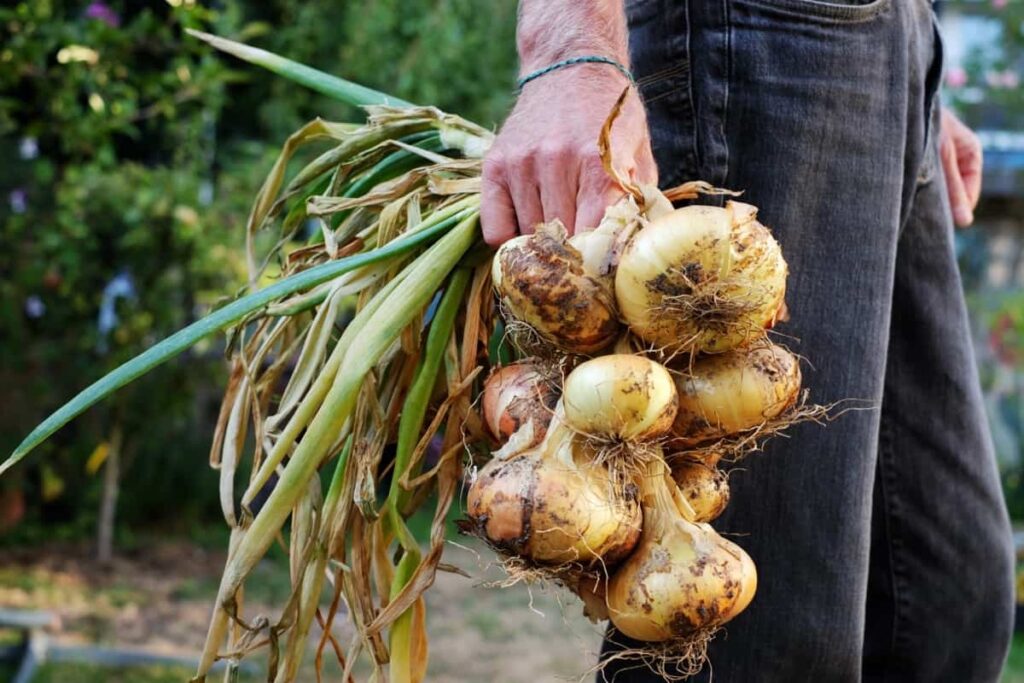
Popular crops grown in the state include potatoes, onions, tomatoes, cauliflower, cabbage, peas, carrot, okra, radish, bitter gourd, and brinjal. The horticulture department has not only contributed greatly to diversification. Still, it is a viable alternative for landless and marginal farmers with less than one acre of land.
The recent opening of three Centres of Excellence, located in Kartarpur, Dhogri village in Jalandhar, and Khanaura village in Hoshiarpur, is making new horticulture techniques available to small, medium, and large farmers under heavy debt. Besides providing high-quality seeds and hybrid plants to farmers at reasonable prices, these centers also offer free training in their respective fields.
| Vegetable | Areas growing in Punjab |
| Potatoes | Jalandhar, Hoshiarpur, Kapurthala, Ludhiana, Amritsar, Bathinda, and Fatehgarh Sahib |
| Onions | Sangrur, Barnala, Patiala, and S.S. Nagar |
| Tomatoes | Amritsar, Ropar, Jalandhar, Hoshiarpur |
| Cauliflower | Patiala, Bathinda |
| Cabbage | Khanna and Ludhiana |
| Okra | Patiala, Bathinda |
| Radish | Sheikhupura, Sahiwal |
| Brinjal | Jalandhar, Hoshiarpur, Kapurthala, Ludhiana, Amritsar, Bathinda, and Fatehgarh Sahib |
Organic fruit farming in Punjab
Most of the fruit is imported from other states, as the state mainly produces food grain crops. Kinnow is the main fruit grown in Punjab. Fazilka, Muktsar, and Firozpur districts are mostly covered with Kinnow orchards. A large amount of the production is sent to other states and consumed within the state. Apart from Kinnow, Guava and Mango are other main fruits of Punjab. The Firozpur district is the main guava producer, and the state consumes enough for its needs.
In case you missed it: How to Get Rid of Fruit Fly in Cucurbits: Symptoms, Treatment, Chemical, and Organic Control
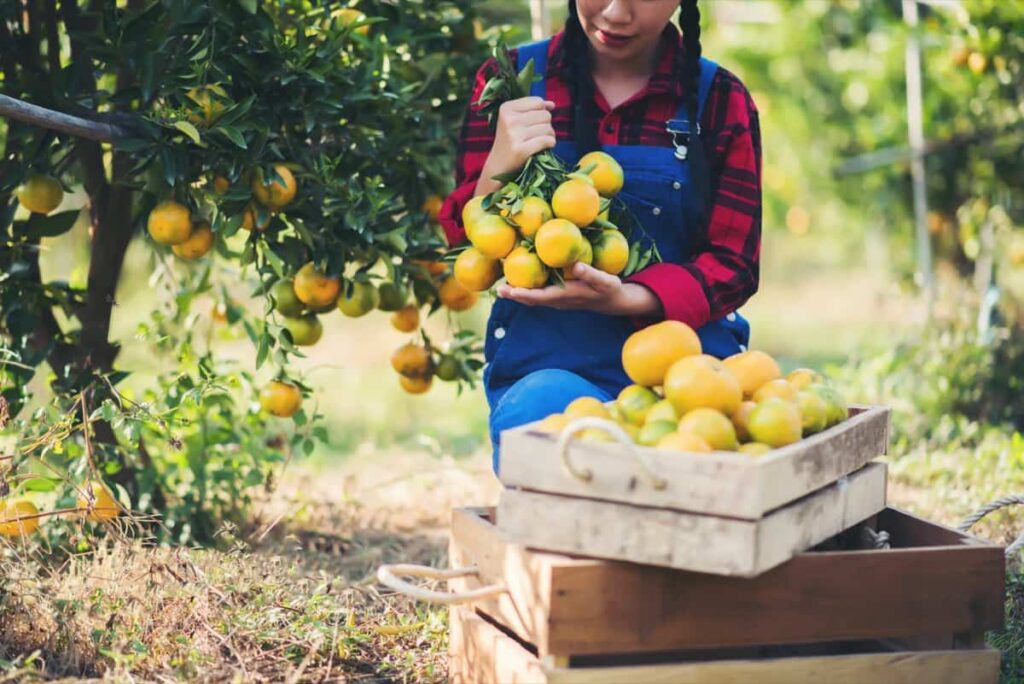
Punjab’s Gurdaspur and Hoshiarpur districts have the most mango orchards, but the production is low compared to the state’s total consumption. Also produced in reasonable quantities are pears, peaches, lemons, and berries, which are enough for the state’s consumption. Most of the state’s fruits are imported from other parts of the country, such as apples, mangoes, bananas, grapes, papayas, and watermelons. Below are the areas and production of different fruits:
| Crop | Area (Hectare) | Production (Metric Ton) |
| Kinnow | 50147 | 1162455 |
| Guava | 8103 | 182089 |
| Mangoes | 6748 | 113687 |
| Pear | 2910 | 66814 |
| Peach | 1782 | 31675 |
| Litchi | 2320 | 37637 |
| Orange and Malta | 2813 | 23250 |
| Ber | 1516 | 25420 |
| Total Fruits | 80079 | 1700462 |
Organic herbs farming in Punjab
Bathinda-based Maharaja Ranjit Singh Punjab technical university researchers have identified amla, haldi, ashwagandha, sarpgandha, and others, as significant plants suitable for the state based on soil, temperature, rainfall, and water quality across Punjab. They have also identified about 70 progressive farmers for feedback on their experience with medicinal plants.
Punjab hills soil is very fertile for the cultivation of various medicinal herbs. Therefore, the Punjab government has decided to promote the cultivation of medicinal plants in the 20,000-hectare forest area of Pathankot district. Through this initiative, the State government aims to provide a source of income to people living in hilly areas and create a force of forest guards.
In addition, the State Government provides tin sheds, shredding machines, automatic drying machines, utensils, etc. This will make the manufacturing of ayurvedic medicines easy. And also, more than 74 Self Help Groups (SFG) are being provided required technical know-how for medicinal plants. Special emphasis is on the cultivation of amla(Indian gooseberry), lemongrass, Harar, bahera, tulsi(basil), etc.
Organic millet farming in Punjab
A millet is a small-seeded grass, such as pearl millets (Bajra) and sorghum (‘jowar/charri’). Traditionally, these coarse cereals have been used to make healthy, nutritious foods, such as Bajra/Jowar dee roti and khichri. Mostly grown in dry and rain-fed regions, millets are small-seeded annual grasses. Punjab grows mainly Bajra and Jowar, which are sown during the Kharif season (April to October) from June/July to October. Around 1,000 hectares of Bajra are now being cultivated in Punjab, down from more than 11 lakh hectares in the 1950s.
Although the cultivation area has decreased under these wonder grains, the scientists at PAU strive to maintain the legacy by continuously developing high-yielding and nutritious varieties. Wide varieties and hybrids of Bajra and Jowar have been released for use as fodder and grain. Still, now scientists are working on biofortified varieties for use as value-added crops.
In case you missed it: Organic Foxtail Millet Farming: Production and Management Practices for Beginners
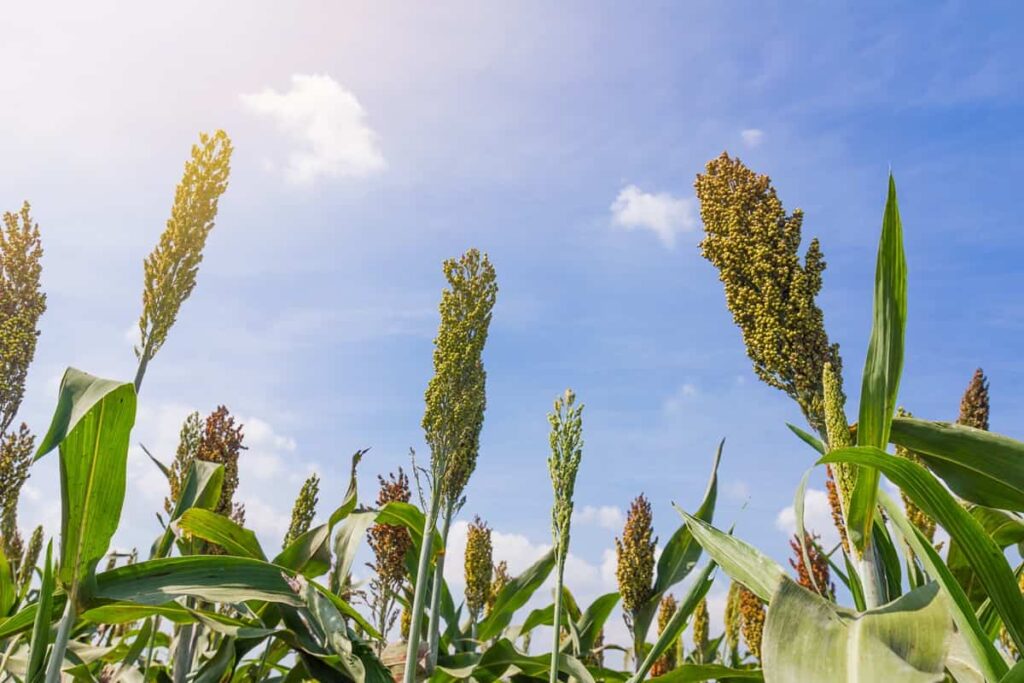
In addition to being useful to consumers, these varieties would benefit Punjab farmers economically. PCB 165 (2020) and PCB 166 (2022) of Bajra and SL 45 of sorghum, which is a very good variety of millet, have recently been developed by PAU. Both varieties are good sources of nutritional security because they are high-yielding.
In the state, the yields of millet crops have increased thanks greatly to improved varieties of PAU. Per acre, pearl millet now yields nearly 14 quintals. PAU-developed green fodder millets yield 275 quintals per acre for sorghum and 260 quintals for pearl millet. For sorghum and pearl millet, the dry fodder yield is 68 quintals per acre and 45 quintals per acre, respectively.
Organic livestock farming in Punjab
Livestock plays an important role in the Rural Economy of the State. 13% of the net state domestic product comes from the livestock sector. The state government is prioritizing removing poverty and creating self-employment opportunities for the rural masses. Animal husbandry activities have attained importance as they create self-employment opportunities and subsidiary occupations for society’s weaker section.
In Punjab, dairy farming is an important source of income. There are about 6,000 progressive dairy farmers in Punjab, and there are more in the state, with farms ranging in size from 10 to 500 high-yielding cow breeds. The daily milk production by these farms is also between 12 and 15 lakh liters. Since 2007, the state has grown from 600 commercial dairy farms to over 6,000 today, indicating a significant increase in commercial dairy farming.
Increasingly progressive and enterprising farmers are entering these remunerative ventures. The government is working towards uplifting sheep breeders of the state by providing them with high genetic potential purebred exotic breed males for breed improvement of their flock. The high genetic potential males are supplied to sheep breeders/farmers of the state at subsidized rates, whereas females produced at the farm are reared to obtain purebred offspring.
In case you missed it: Dairy Contract Farming in India: Companies, Agreement, Profits, How it Works and the Pros and Cons

Currently, two exotic sheep breeds, Rambouillet and Poll Dorset are reared at the farms. Government Goat Breeding Farm is working towards uplifting goat breeders of the state by providing them with high genetic potential purebred males for breed improvement of their flock. The high genetic potential males are supplied to goat breeders/farmers of the state at subsidized rates, whereas females produced at the farm are reared to obtain purebred offspring. Currently, the indigenous goat breed Beetal is reared at the farm.
Organic aquaculture in Punjab
About 1.5 lakh ha of salt-affected lands are available in South West Punjab, covering six districts – Sri Muktsar Sahib, Bathinda, Fazilka, Mansa, Faridkot, and Ferozepur, which has become unfit for profitable agricultural activities. Aquaculture can convert these unproductive zero-earning lands into economically viable lands. Aquaculture can help in the evapotranspiration of a large proportion of water from these areas, besides generating livelihood for the affected farmers.
An animal science university, GADVASU, has initiated carp cultivation in a low salinity environment in the Shajrana village of the Fazilka district. First, fish harvest from the wastelands attracted the attention of the farmers, and subsequent adoption in the village increased the area under aquaculture from 1 ha in 2010 to about 30 ha in 2015.
Then, encouraged by the successful culture of freshwater carps in low-saline areas, the university further took the challenge of utilizing the medium to the high-saline area for aquaculture and conducted the preliminary vannamei (Litopeneaus vannamei) shrimp culture trial in the village Shajrana, followed by a first commercial farming trial in village Painchanwali (District Fazilka) in 2014, which also reaped rich harvests beyond expectations of the villagers.
With constant technological and extension support from GADVASU and State government promotional schemes, shrimp farming is slowly moving towards a commercial industry in four districts (Fazilka, Shri Muktsar Sahib, Mansa, and Bathinda), involving about 70-80 farmers. These farmers are actively associated with the university for technical guidance, disease surveillance support, and many other utility services like training, water testing, seed testing, disease diagnosis/management, consultancy, and literature.
In case you missed it: Shrimp Farming Business Plan: Every Aqua Farmer Should Know Before Getting Started
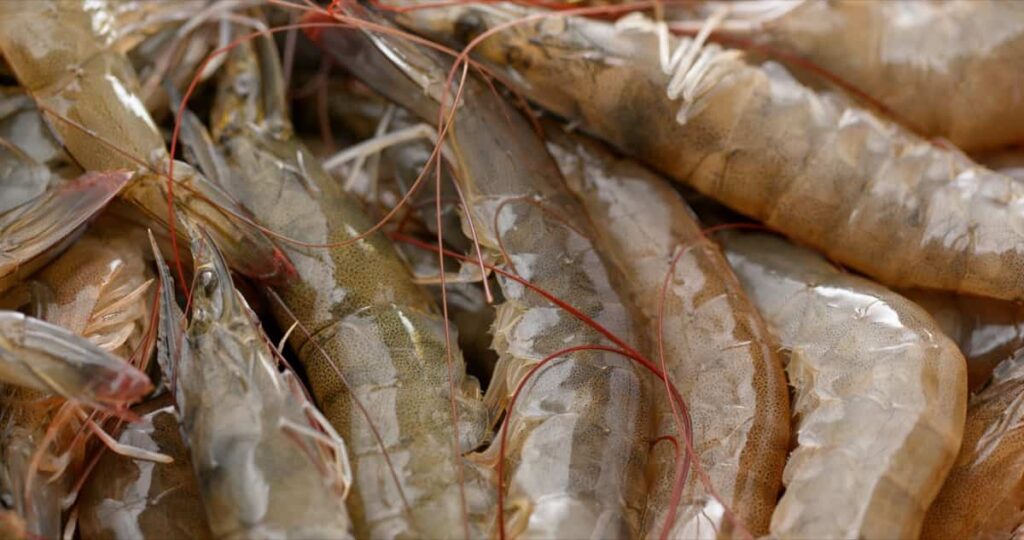
How to get organic certification in Punjab
NPOP is a national program for organic production implemented by the government of India. Certification bodies are accredited, organic production standards are set, organic farming and marketing are promoted, etc. The European Commission and Switzerland have recognized standards for production and accreditation of unprocessed plant products set by NPOP as equivalent to those in their countries.
As a result of these recognitions, Indian organic products duly certified by India’s accredited certification bodies are accepted by countries that import organic products. APEDA is also negotiating with Australia, South Korea, Taiwan, Canada, Japan, etc.
Organic farming certificarion procedure
- Farmers, groups of farmers, processors, and traders who want an organic farming certificate must ensure their farm conforms to the standards set forth by the national program for organic production (NPOP) for organic crop production before they can obtain one.
- As required by the national organic program (NPOP), applicants must submit an application in the requisite format along with the fee and complete field verification.
- Listed on SGS’s website are the general standards for organic crop production provided by SGS’s organic food certification.
- The operator can contact SGS via phone, email, fax, or other communication methods. The SGS sends a contact form the operator fills in the contact form with the necessary details.
- An operator can fill up the application in the prescribed format and send it to the operational office address of SGS along with the Registration format and organic system management plan. In addition, the application packet containing templates of the application, registration form, organic system management plan, and copy of standards is sent to the operator.
- The application is reviewed to know the operator’s activities, the inspection program, Scope, location, language, schedule, and other technical details. Finally, a quotation is prepared per the Tariff structure.
- A complete application and the operator’s responsiveness to additional information requests will shorten the application review time. In addition, it is checked that an operator who has previously applied to another certification agency and received a notification of noncompliance or denial of certification has submitted documentation to support the correction of any noncompliance(s) identified by the notification of noncompliance or denial of certification.
- An invoice for payment is sent to the operator for payment after the acceptance of the Quote. Inspection is undertaken only after paying 70% of the fees as mentioned in the invoice. The balance payment has to be made by the operator before the issuance of the certificate
- The operator signs a contract with SGS. Now the inspection is being carried out.
- The inspector submits the inspection report along with the necessary evidence and supporting documents to the certification department.
- Under instruction from the certifier, the Evaluator evaluates the documents, assessments, and inspection report submitted by the inspector to verify the compliance and sufficiency of the evidence to assist the certifier in arriving at a certification decision.
- In response to a notice of noncompliance, the operator or client may: correct the noncompliance and submit a description of the corrective actions taken with supporting documentation to SGS. In addition, submit written information to SGS to rebut the noncompliance described in the notification of noncompliance.
In case you missed it: How to Start Bio Farming/Agriculture: A Step-By-Step Guide for Beginners
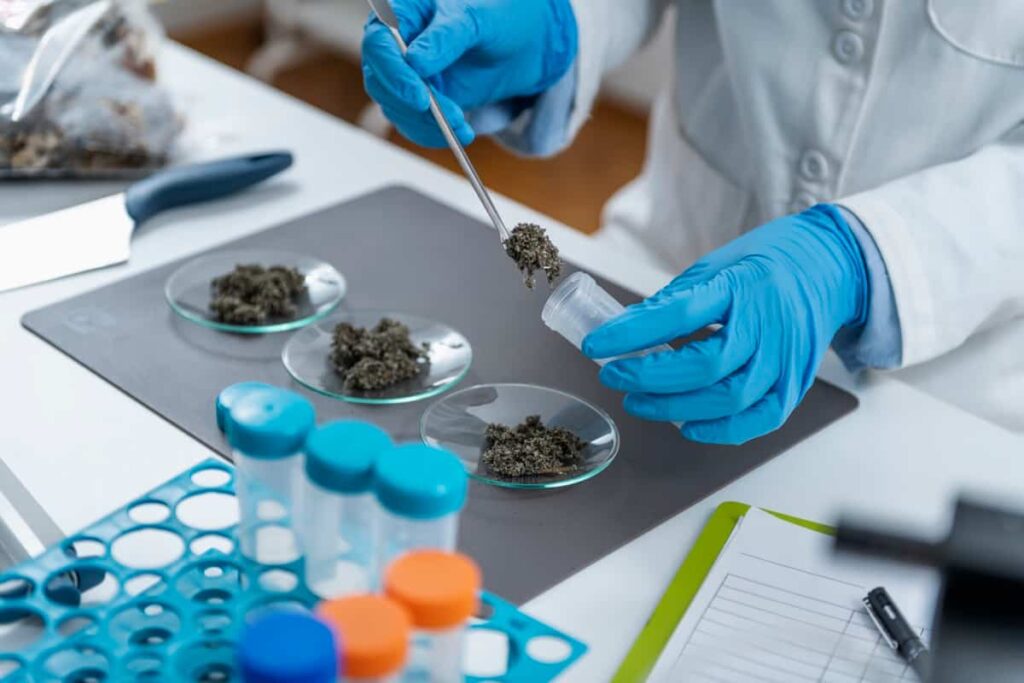
- Once the corrective actions are received back from the operator, SGS will evaluate the corrective actions taken and supporting documentation submitted and conduct an on-site inspection if necessary. The evaluation will be completed within 8 working days of the submission of the report by the inspector.
- The certification committee makes a certification decision based on the evaluation findings for the inspection and is communicated to the operator in writing. The conclusion regarding the deviations, conformity, and improvement measures are clearly stated in the certification decision, which is then sent to the client along with the inspection report.
- SGS may request more information to determine compliance with relevant standards at any time during the certification decision process. When the corrective action is sufficient for the operator to qualify for certification, SGS will issue the operator a certification approval.
- The certificate of conformity to the Standards is issued to the operator after the Certification decision. The certification decision and Scope issuance are made within eight working days of the evaluation.
- After certification, the operator can apply for the Transaction certificate and all the required documents. The transaction certificates (Provisional/ Final) will be issued after complete verification of the data, source, quantity, and status of the traded product. SGS issues transaction certificates for domestic sales and export per the equivalency agreements.
Conclusion
In recognition of Punjab’s efforts to promote organic farming and implement programs to support organic farmers, Punjab has been selected in the category of the best state government’s “Jaivik India Award.” Punjab is implementing such programs by providing institutional assistance to farmers under various central government schemes through the Punjab Agri Export Corporation (PAGREXCO).
Most organic farmers were identified in selected districts of Punjab, such as Ludhiana, Patiala, Bathinda, and Muktsar. As a result, Punjab has successfully brought 8000 acres of land under certified organic 8000 production with 2100 farmers.
- Rosecoco Beans Farming in Kenya: Tips for Cranberry Beans Cultivation
- Why My Moringa Pods Are Underdeveloped and Are Drying: Reasons and Solutions
- How to Choose the Right Liquid Fertilizer for Your Flowers
- Sustainable Manure Management and Composting
- Water Usage Efficiency: ZBNF vs. Conventional Farming
- Goat Farming Business Plan: 10 Key Points to Consider
- How to Make Your Sheep Gain Weight in 3 Months
- How to Start a Terrace Garden in Hyderabad: Best Tips for Beginners
- Comparative Yield Analysis: ZBNF vs. Conventional Farming
- Ultimate Guide to Commercial Tulip Farming: Cultivation Tips for Beginners
- Bridging the Technology Gap: HELIOT Systems Transforming Agriculture for Small and Marginal Farmers
- How to Grow Fig Trees in Containers: A Comprehensive Guide
- How to Prevent Fruit Split in Pomegranates: Effective Tips for Beginners
- Natural Farming for Livestock: Effective Practices for Beginners
- Ultimate Guide to Growing Currants: Tips for Successful Red and Black Currants Farming
- How to Boost Bottle Gourd Flowering and Yield
- A Step-By-Step Guide to Organic Papaya Farming
- Step-By-Step Guide to Hazelnut Farming: Cultivation Guide for Beginners
- Pruning and Training Techniques for Gourds
- Pollination Strategies for Better Fruit Set in Plants: A Beginners Guide
- How to Convert Existing Drip to Sprinkler Irrigation: A Beginner’s Guide
- Reasons for Papaya Tree Leaves Turning Yellow: Solutions Explained
- Why is My Bonsai Tree Dying: Reasons and Solutions
- Natural Farming Techniques for Beginners
- Why is Citrus Tree Leaves Turning Yellow: Reasons and Solutions
- Cultivator Uses in Agriculture: A Beginners Guide
- Modern Irrigation Methods in Agriculture
- How I Make My Peppers Grow Faster: A Comprehensive Guide
- Crops Grown in Summer Season: Best Choices for Summer Gardening
- Organic Pest Control for Tomato Farming
- How to Maximize Sheep Farming Profit
- Broccoli Varieties: Choosing the Right Cultivars for Your Farm
- How to Raise Pigs in Your Own Backyard: A Comprehensive Guide
- Budget Friendly Sheep Shed Ideas: Cheap and Low-Cost Tips
- How Much Do Cattle Farmers Make: Revenue Streams in Cattle Farming
- Management Pests and Diseases in Your Cotton Field
